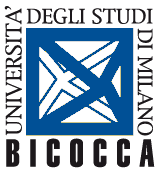Lautsi c. Italia, No. 30814/06, ECtHR (Second Section), 3 November 2009
Thematic areas
President
Abstract
The display of the crucifix in the classrooms of public schools violates art. 2 of the first Additional Protocol to the ECHR, taken together with art. 9 of the Convention.
Normative references
Art. 2 Prot. 1 ECHR
Art. 9 ECHR
Ruling
1. The second sentence of Article 2 of Protocol No. 1 implies that the State, in fulfilling the functions assumed by it in regard to education and teaching, must take care that information or knowledge included in the curriculum is conveyed in an objective, critical and pluralistic manner. The State is forbidden to pursue an aim of indoctrination that might be considered as not respecting parents’ religious and philosophical convictions. That is the limit that must not be exceeded.
2. In Countries where the great majority of the population owe allegiance to one particular religion the manifestation of the observances and symbols of that religion, without restriction as to place and manner, may constitute pressure on students who do not practise that religion or those who adhere to another religion. The symbol of the crucifix has a number of meanings among which the religious meaning is predominant.
3. The presence of the crucifix may easily be interpreted by pupils of all ages as a religious sign, and they will feel that they have been brought up in a school environment marked by a particular religion. What may be encouraging for some religious pupils may be emotionally disturbing for pupils of other religions or those who profess no religion. That risk is particularly strong among pupils belonging to religious minorities. Negative freedom of religion is not restricted to the absence of religious services or religious education. It extends to practices and symbols expressing, in particular or in general, a belief, a religion or atheism. That negative right deserves special protection if it is the State which expresses a belief and dissenters are placed in a situation from which they cannot extract themselves if not by making disproportionate efforts and acts of sacrifice.
Notes
The ruling was reformed by the Grand Chamber on March 18, 2011.

